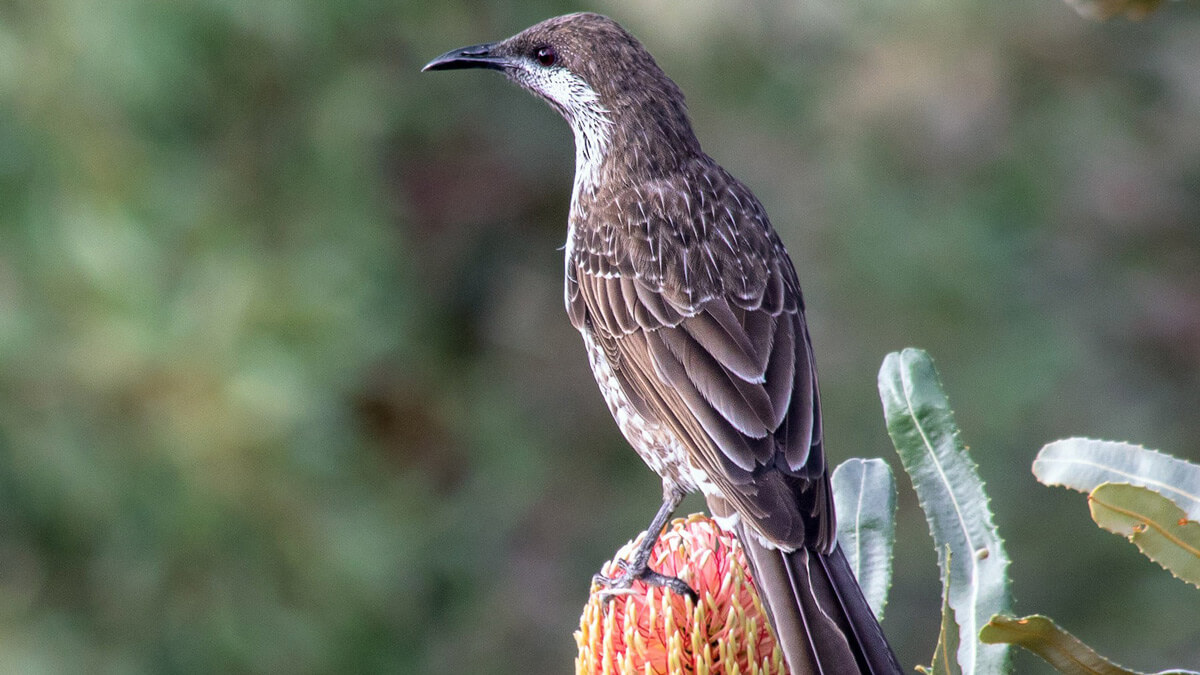
Meet Wally the Wattlebird. Born in Subiaco in September 2020 to two devoted Wattlebird parents, like many of his kind, the first few weeks of life were touch and go. Blessed with a face that only a mother could love, yes strangely alluring, Wally’s clown-like appearance has attracted leagues of followers and led to the coining of the phrase, “Cutugly”,
We first met Wally bouncing along the footpath in Subiaco, perhaps just one week old, feather-free and tweeting like a screaming idiot as mum and dad looked on nervously, waiting for the first bike or nearest cat to bring Wally’s life to a swift end.
Numerous attempts to place Wally back in the tree failed, yet after bringing Wally home and calling the local birdlife experts, we were told the best thing was to return him to his mum and dad. The problem was that Wally from a very early stage developed an eversion for heights and a love of the ground, which is not a great survival strategy for a baby chick.
And so begun a daily ritual, morning and night, to and from work and school with the kids, searching for Wally and returning him to the nest. We could always find him by waiting a few minutes to see where mum and day would go to feed him, including amongst the weeds on the vacant block on the other side of busy Hamersley Road.
Remarkable, Wally survived and with his brother Waldo, eventually took to the air.

Fighting for survival
There’s something very satisfying about seeing native wildlife adapt and thrive in an urban environment. It’s also a great way to get kids more interested in native wildlife and engaged in the world around them, and away from the screens, which can’t be a bad thing.
Wattlebirds are some of the most prolific native birds in Perth. Especially in spring, if you take the time to look up, you can see them everywhere, preparing nests, constantly fighting off the crows (technically Australian Ravens) and more recently, feeding their young. The crows are a danger as they can eat the eggs and take the young chicks. A little known fact is that despite their superior size, crows have a weak spot, which is that if just a few of their tail feathers are plucked, they struggle to fly, making them vulnerable to smaller birds.

It’s easy to see when the chicks are born because you can hear them furiously tweeting and see both parents returning with food every few minutes.
HOW CAN WE HELP?
Wattlebirds are a sucker for nectar, insects and fruits and wouldn’t mind if you did plant a native banksia, eucalypt, bottlebrushes or kangaroo paw in your garden. Gardens with various flowers blooming throughout the year will keep our feathers friends feeling welcome all year long.
Bird baths are also a great hit to attract birds into your garden, however, be mindful if you have a four-legged friend at home to ensure the safety of the visitors. If you have a deep pond in your garden, add a few submerged rocks and logs to provide refuge for any that accidently fall in.

Wattlebirds like Wally have the important job of pollinating native plants that provides us all with a more connected ecosystem. As spring is well and truly upon us, you are bound to spot a myriad of birds in the skies and in our gardens. Head to BirdLife Australia to learn all you need to know about our friends in the sky and why your at it, download the birdata app to record and assist in the conservation of our unique wildlife.
If you do find yourself face to face with an injured or displaced Wally in the future, there are a number of wildlife sanctuaries and organisations at the ready to provide rehabilitation and resources for our precious fauna.
- Wildcare Helpline 08 94749055
- Native Arc , located in Bibra Lake contact 08 9417 7105.
- Perth Wildlife Rescue Network
- Birdlife Australia, Perth Office (08) 9383 7749
- Native Animal Recue in Malaga contact (08) 9249 3434








